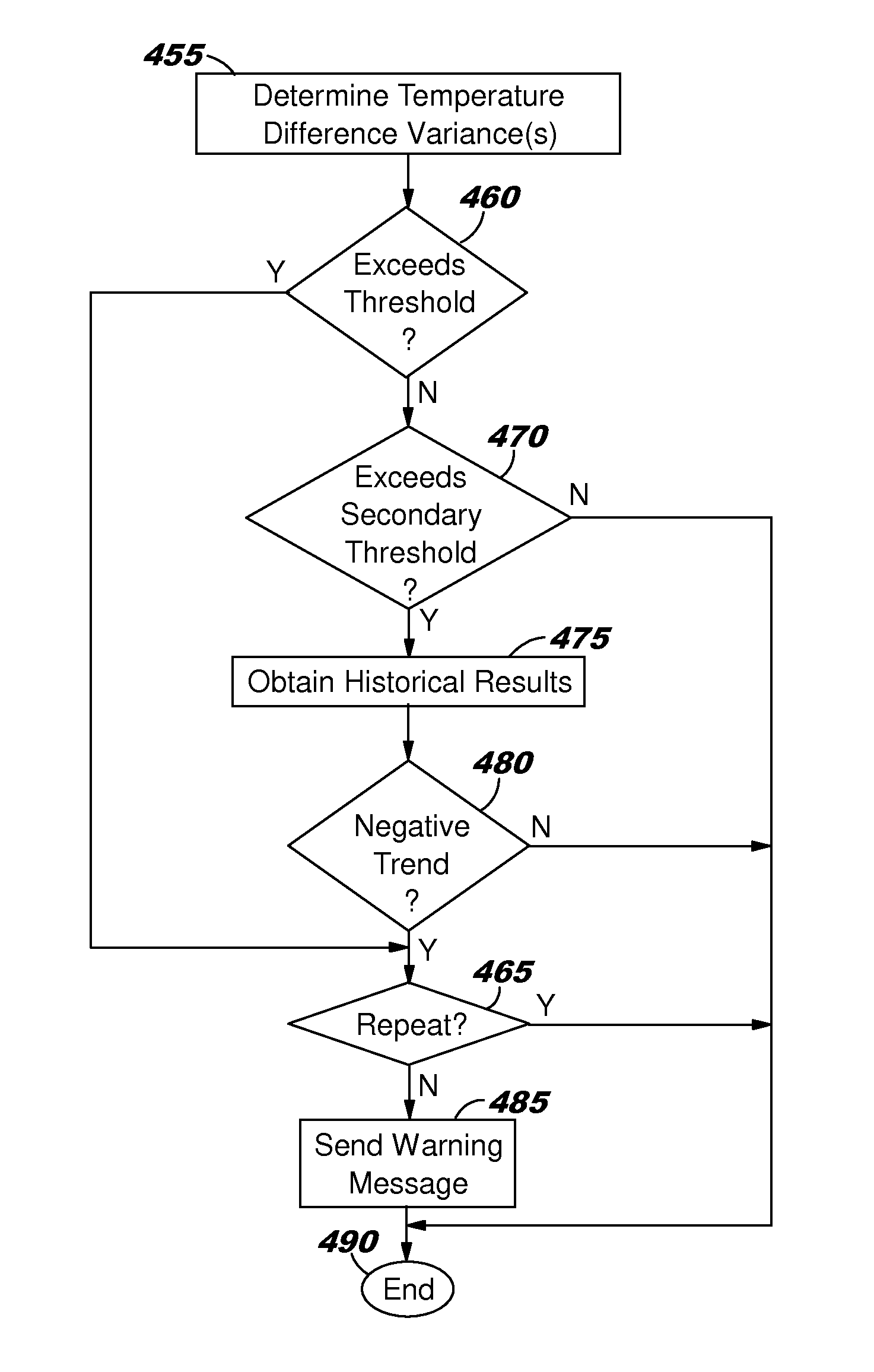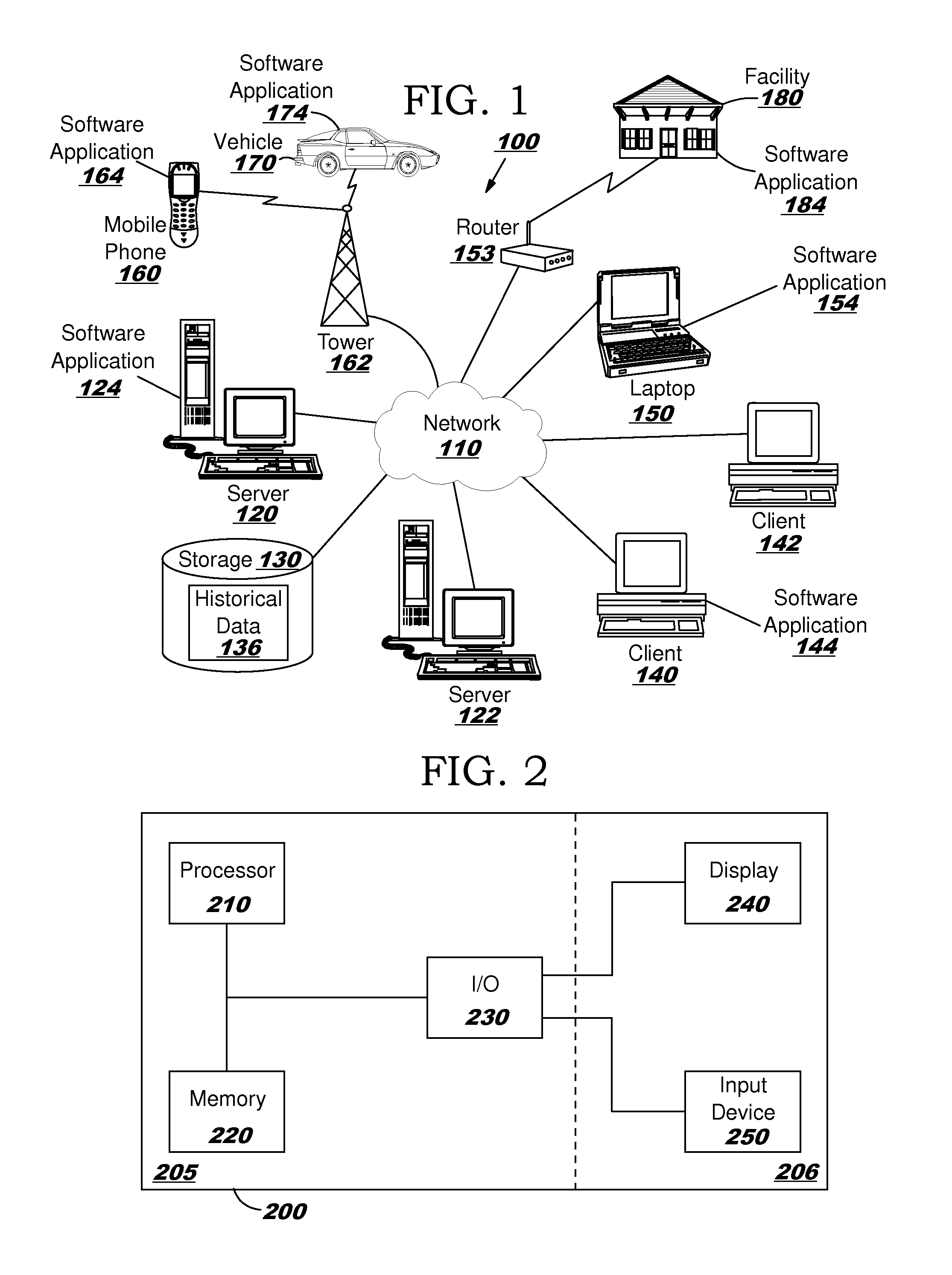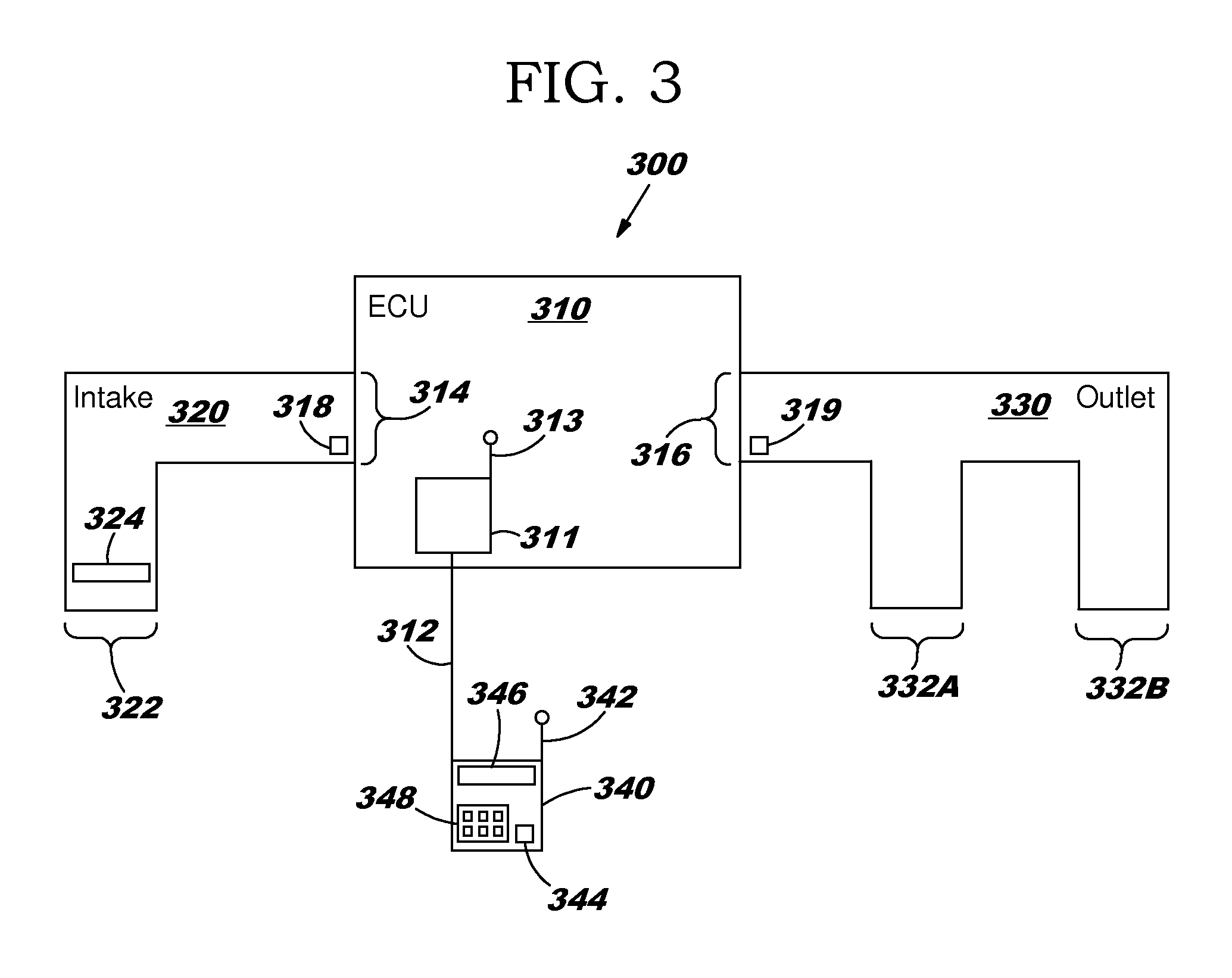Managing environmental control system efficiency
a technology of environmental control system and efficiency, applied in process and machine control, nuclear engineering, nuclear elements, etc., can solve the problems of heating and air conditioning system occasionally needing maintenance, increasing cost of those energy sources, and wasting costly energy
- Summary
- Abstract
- Description
- Claims
- Application Information
AI Technical Summary
Benefits of technology
Problems solved by technology
Method used
Image
Examples
first embodiment
[0029]FIG. 3 depicts a block diagram of an environmental control system 300 in accordance with a This embodiment may be implemented within an environmental control unit from the factory. Environmental control system 300 includes an environmental control unit 310, an air intake plenum 320, an air outlet plenum 330 and an external control unit 340. As described above, an environmental control unit may include and air conditioning unit, a heating unit, or both. If both, it is often referred to as a HVAC (heating, ventilation and air conditioning). The operation of environmental control system 300 is described below with reference to FIG. 4.
[0030]Environmental control unit 310 includes an internal control unit 311 which coupled to an external control unit 340. Control units 311 and 340 may be coupled by wire 312 or wirelessly using antennas 313 and 342. Environmental control unit also contains an intake 314 and an outlet 316. Air is drawn into intake 314 through intake plenum 320 such ...
second embodiment
[0041]FIG. 5 depicts a block diagram of an environmental control system 500 in accordance with a This embodiment may be implemented within an environmental control unit during or after installation at a home, business or vehicle. Environmental control system 500 includes an environmental control unit 510, an air intake plenum 520, an air outlet plenum 530 and an external control unit 540. As described above, an environmental control unit may include and air conditioning unit, a heating unit, or both. If both, it is often referred to as a HVAC (heating, ventilation and air conditioning). The operation of environmental control system 500 is described below with reference to FIG. 6.
[0042]Environmental control unit 510 may be coupled to an external control unit 540 by wire 512 or wirelessly to external control unit antenna 542. Environmental control unit contains an intake 514 and an outlet 516. Air is drawn into intake 514 through intake plenum 520 such as by using a fan. The temperat...
PUM
 Login to View More
Login to View More Abstract
Description
Claims
Application Information
 Login to View More
Login to View More - R&D
- Intellectual Property
- Life Sciences
- Materials
- Tech Scout
- Unparalleled Data Quality
- Higher Quality Content
- 60% Fewer Hallucinations
Browse by: Latest US Patents, China's latest patents, Technical Efficacy Thesaurus, Application Domain, Technology Topic, Popular Technical Reports.
© 2025 PatSnap. All rights reserved.Legal|Privacy policy|Modern Slavery Act Transparency Statement|Sitemap|About US| Contact US: help@patsnap.com



